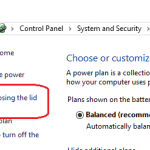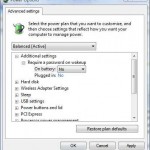Have you ever thought of what is the differences between Sleep and Hibernate options provided by Windows Vista, Windows 7, Windows 8, Windows 8.1 and Windows 10 shutdown function? Both commands provide a easy and quick way to leave your computer in existing last state and come back to work on it at exactly the same state later without waiting too long to system to restore itself. However, fundamentally there are significant different between them that allows users to easily choose whether they should use Sleep or Hibernate.
Sleep is commonly known as Standby in Windows system or S3 in ACPI. In Sleep mode, the power supply to non-essential and non-critical component is withheld, and most system operation is shutdown and stopped. All data in physical memory (RAM module) is still kept in internal memory, and whole system is place in stand-by mode, which can be woke up and used almost immediately. In Sleep mode, the power load reduce considerably, saving a lot of energy. However, the power must not be cut off, and must be continue to supply to the computer. Once out of power, the system will have to start again just like a newly boot computer just started from power off state.
Beginning from Windows Vista, Windows has enhanced sleep mode so that on notebook computer, sleeping computer will automatically hibernate when battery power level is low. It also has built-in Hybrid Sleep mode which ensure that system state is preserved when there is power lost.
Hibernate, or S4 in ACPI, meanwhile will save the data in physical memory to hard disk drive (HDD), and then power off the computer. In Hibernate mode, a file named hiberfil.sys which has about the same file size as the amount of system memory will be created on the local disk. When user wants to use the computer again, the computer will boot up and load back the state at the last hibernation. The advantage of Hibernation mode is that no power is wasted for maximum saving of power. In Hibernation dormancy, no electricity is consumed by system. Beside, restore from Hibernate is generally faster than computer reboot, and is totally different from fresh start, as users can return to the exact state of last hibernation with all programs running and documents opened intact, instead of empty desktop. The disadvantage of Hibernate is that after a period of time, there may have fragmentation of file. Users will need to defragment the volume that stores the hibernation file frequently.





